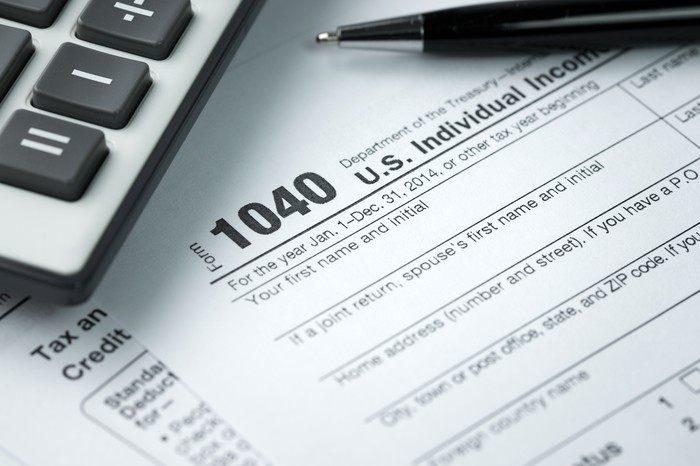
Taxes get most people’s attention only during tax season, but they affect you all year long. It’s not just money coming out of each paycheck. The decisions you’re making today can affect the size of your tax bill next spring. With careful planning, you can bring that bill down and keep more of your own money. Here are three things you can do right now to make the next tax season a smoother ride.
1. Contribute as much as you can to tax-advantaged accounts.
You probably know that contributions to traditional IRAs and 401(k)s reduce your taxable income for the year, which in turn reduces how much you pay in income taxes. But you’re limited in how much you can place in these accounts. You’re allowed to contribute up to $6,000 to an IRA and $19,000 to a 401(k) in 2019. Adults 50 and older may contribute an extra $1,000 to an IRA and $6,000 to a 401(k), bringing their limits to $7,000 and $25,000, respectively. In exchange for the tax break today, you will pay taxes on your distributions in retirement.
Roth 401(k)s and IRAs don’t give you any tax breaks this year, but after you pay taxes on your initial contributions, the money grows tax-free. Contribution limits for Roth IRAs and 401(k)s are the same as the limits for the tax-deferred versions of these accounts. It’s worth noting that the above limits apply to all your IRAs and 401(k)s combined, not to each type of account.
Health savings accounts (HSAs) are another option if you’d like to stash a little money away from Uncle Sam. They enable you to set aside pre-tax dollars for healthcare expenses, and if you use them for a qualifying medical expense, you won’t pay taxes on the money at all. You can withdraw money from this account for any reason, but you’ll pay income tax, plus a 20% penalty if the expense isn’t medically related. But the penalty disappears at 65, making the HSA similar to a traditional IRA.
HSAs are available only to those with a high-deductible health insurance plan, defined as one charging a deductible of $1,350 or more for an individual or $2,700 or more for a family. Individuals can contribute up to $3,500 to an HSA in 2019 and families may contribute up to $7,000. Adults 55 and older are allowed an extra $1,000 in catch-up contributions per year.
2. Report all self-employed income.
Side hustles are common these days, and some don’t realize that the government doesn’t take any taxes from these earnings — but that doesn’t mean you don’t owe anything. It’s your responsibility to report all self-employed income you earned throughout the year, even if you never received a 1099 for your services, and set aside the government’s cut of your earnings. Failure to do so could result in an audit if the government catches wind.
If you earn a substantial amount of side income or if you’re fully self-employed, you’ll have to pay quarterly estimated taxes. These are due the 15th of April, June, September and January of the following year unless one of these days falls on a weekend, in which case the money is due the next business day. Your prior-year tax return should tell you how much to pay in each quarter, or you can use this worksheet. You could pay a penalty if you don’t pay at least the amount listed on your prior tax return or 90% of your tax liability, whichever is less, or if you end up owing more than $1,000 in taxes at the end of the year.
Consider opening a separate savings account and setting aside money weekly or monthly to keep your tax money separate from the rest of your earnings. Deposit a regular amount so you have enough by the estimated tax due dates.
A good thing about being self-employed is you can to write off business-related expenses, like supplies, business travel, or a home office. But you need receipts or bills proving these expenses in order to claim them as deductions. Keep all this paperwork together so you don’t have to search for it at tax time. If you don’t want all the paperwork cluttering up your home, scan them into your computer.
3. When in doubt, ask a professional for help.
Tax law changes from year to year, and staying up to date on the latest changes is essential for minimizing your tax bill. But few people want to read hundreds of pages of tax code, so the next best option is to consult with a tax professional. They should be up to date on the latest changes to income tax brackets and tax deduction and credit qualification requirements, as well as any other changes that may affect you.
If you have questions about how your financial decisions will affect your tax bill or what tax breaks you may qualify for, it’s always better to ask than to make assumptions. If you guess wrong, you could miss out on valuable savings or run into trouble with the IRS.
Taxes aren’t fun, but you can ease the pain by planning for them all year round. The three tips listed above can get you started.
This Marijuana Stock Could be Like Buying Amazon for $3.19
A little-known Canadian company just unlocked what some experts think could be the key to profiting off the coming marijuana boom.
And make no mistake – it is coming.
Cannabis legalization is sweeping over North America – 10 states plus Washington, D.C., have all legalized recreational marijuana over the last few years, and full legalization came to Canada in October 2018.
And one under-the-radar Canadian company is poised to explode from this coming marijuana revolution.
Because a game-changing deal just went down between the Ontario government and this powerhouse company…and you need to hear this story today if you have even considered investing in pot stocks.
